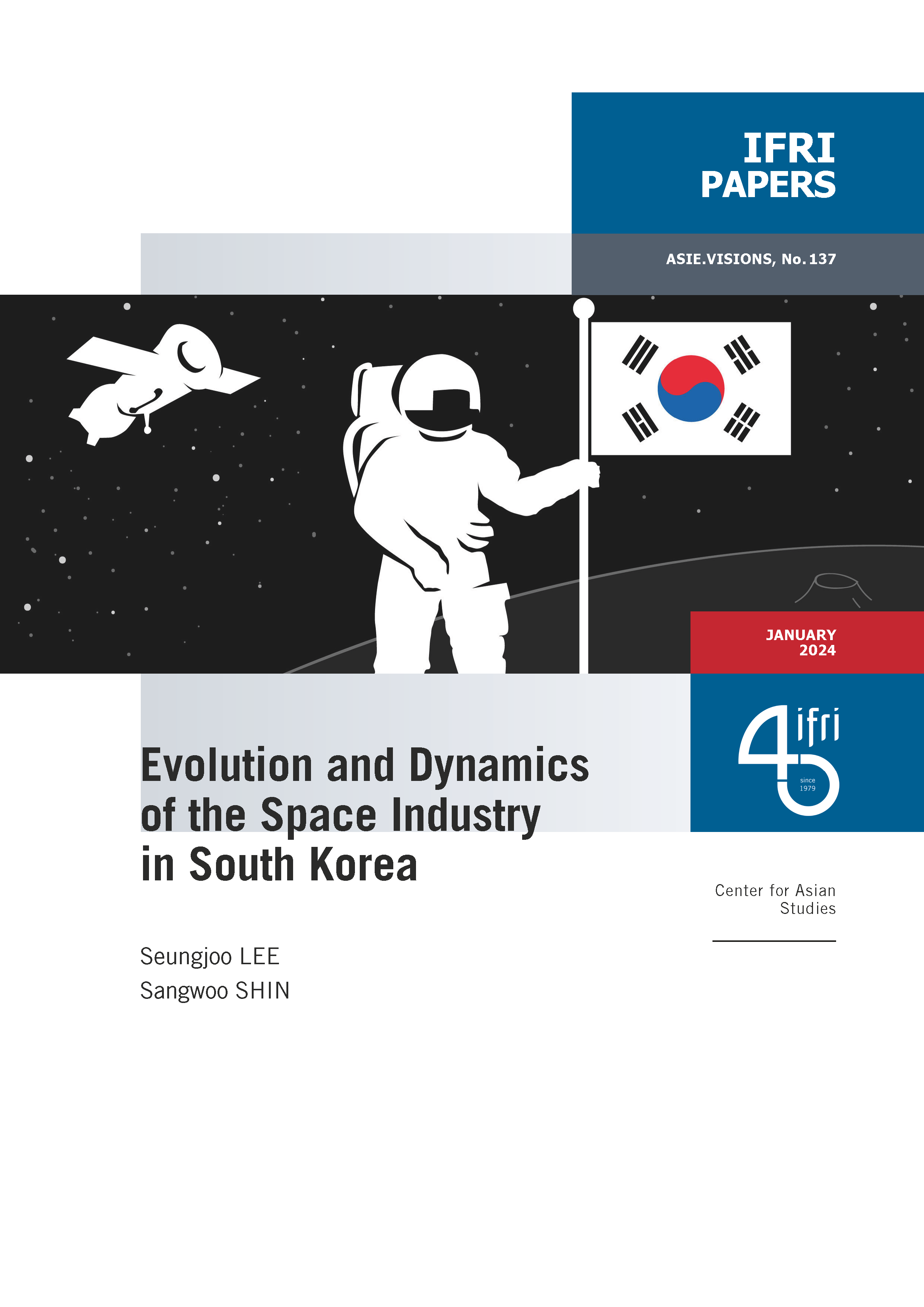Evolution and Dynamics of the Space Industry in South Korea

The advent of the 21st century has witnessed the rise of the space industry as a pivotal arena of technological innovation, economic opportunity, and geopolitical significance. Amidst this global landscape, South Korea has emerged as an increasingly influential player in space exploration and technology.

This paper comprehensively examines South Korea’s strategic approach to its space industry, covering growth patterns, governmental policies, and international positioning.
First, while discussing recent legislative changes and the Korean Aerospace Agency (KASA) establishment, we focus on the space industry ecosystem to highlight a shift to a market-oriented model for sustained growth. The shift in the space industry in South Korea hinges upon various factors, such as well-established governance, the private sector’s capital investment, and legal reforms.
Second, South Korea’s evolving space strategy, spanning three phases and aiming for global space economic power by 2045, is incorporated in the “Space Development 2.0” initiative that outlines goals to integrate space exploration with economic infrastructure. Also, South Korea’s military space strategy, outlining a three-stage plan for enhanced capabilities and institutional restructuring, has emerged as a new component of South Korea’s space strategy. The international cooperation strategy, including a strengthening space alliance with the U.S. and collaborations with emerging space nations, underscores South Korea’s commitment to a global and collaborative approach.
In conclusion, the paper provides a multifaceted analysis, offering insights into South Korea’s trajectory as a critical player in the evolving space landscape, covering legislative, economic, technological, and international dimensions.
Download the full analysis
This page contains only a summary of our work. If you would like to have access to all the information from our research on the subject, you can download the full version in PDF format.
Evolution and Dynamics of the Space Industry in South Korea
Related centers and programs
Discover our other research centers and programsFind out more
Discover all our analyses
RAMSES 2024. A World to Be Remade
For its 42nd edition, RAMSES 2024 identifies three major challenges for 2024.
France and the Philippines should anchor their maritime partnership
With shared interests in promoting international law and sustainable development, France and the Philippines should strengthen their maritime cooperation in the Indo-Pacific. Through bilateral agreements, expanded joint exercises and the exchange of best practices, both nations can enhance maritime domain awareness, counter security threats and develop blue economy initiatives. This deeper collaboration would reinforce stability and environmental stewardship across the region.

The China-led AIIB, a geopolitical tool?
The establishment of the Asian Infrastructure Investment Bank (AIIB) in 2016, on a Chinese initiative, constituted an attempt to bridge the gap in infrastructure financing in Asia. However, it was also perceived in the West as a potential vehicle for China’s geostrategic agendas, fueling the suspicion that the institution might compete rather than align with existing multilateral development banks (MDBs) and impose its own standards.
Jammu and Kashmir in the Aftermath of August 2019
The abrogation of Article 370, which granted special status to the state of Jammu and Kashmir (J&K), has been on the agenda of the Bharatiya Janata Party (BJP) for many decades.






